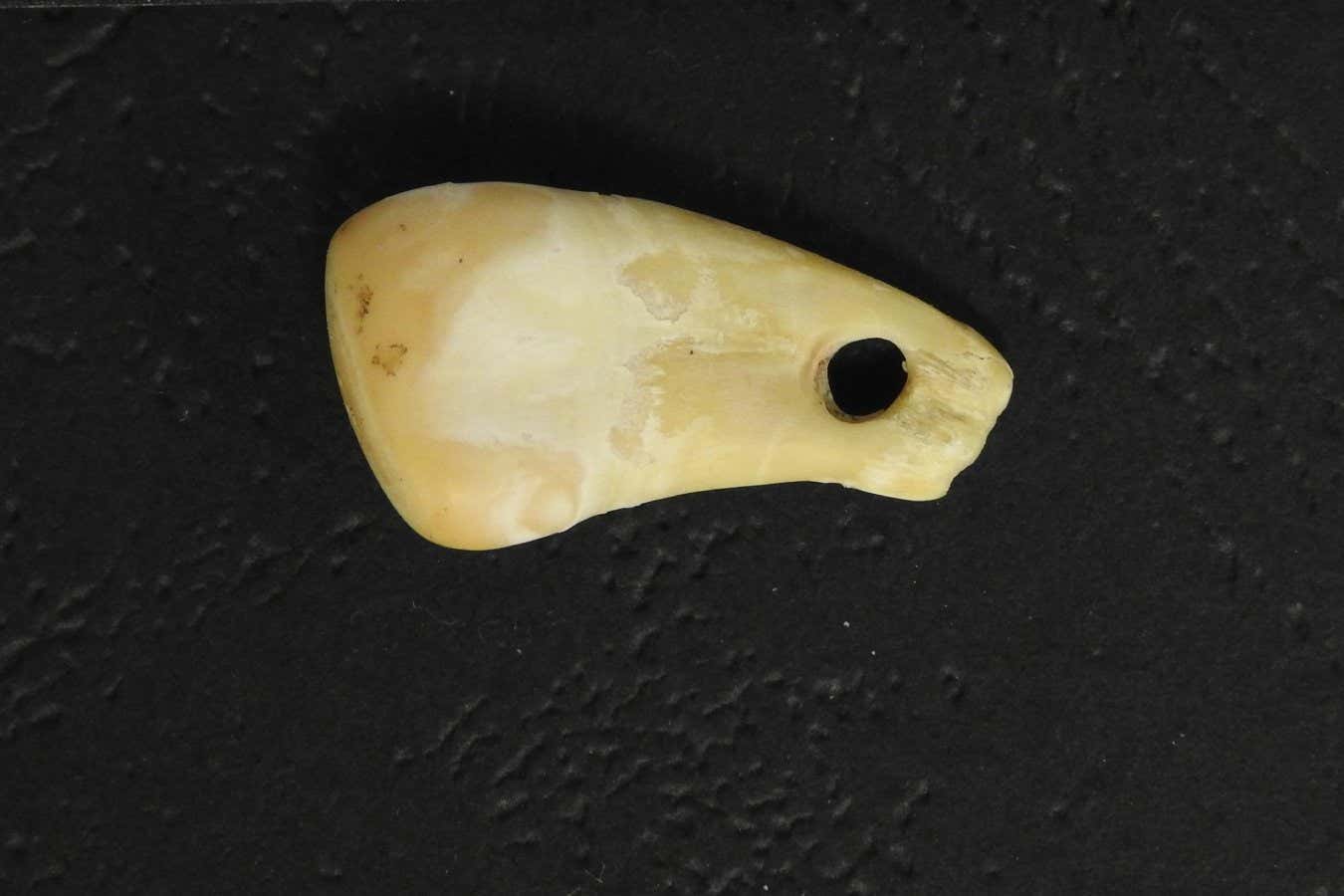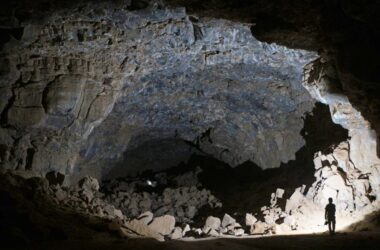A pierced deer tooth discovered in Denisova cave in Siberia
Max Planck Institute for Evolutionary Anthropology
Researchers have successfully extracted DNA found in a 25,000-year-old elk tooth pendant, shedding light on the identity of the ancient woman who wore it. The tooth, used as a necklace bead, likely absorbed the wearer’s DNA from her sweat as it laid against her chest and neck. This breakthrough technique, developed over eight years, has the potential to provide unprecedented insights into the social customs and gender roles of ancient populations.
Scientists have long suspected that ancient tools, weapons, and ornamental beads contain DNA from the individuals who used them, but extracting that DNA without causing damage has proven challenging. The new technique involves a process of placing the objects in a sodium phosphate solution and gradually increasing the temperature, which released significant amounts of human DNA without harming the specimens.
Testing the technique on tooth pendants from Russia and Bulgaria, which were handled by individuals wearing protective gloves and face masks, yielded primarily animal DNA that matched the species used to make the pendants. However, one tooth pendant from Denisova cave in Russia contained human DNA fragments, allowing researchers to identify a female Homo sapiens who likely wore the pendant.
The DNA analysis also revealed that the woman was closely related to an ancient tribe found over 1500 kilometers to the east. This finding suggests long-distance migration and interaction among ancient populations. Additionally, this breakthrough technique could help provide insights into the purpose of ancient jewelry, such as its significance in signaling the wearer’s identity, group affiliation, or marital status.
Furthermore, the study paves the way for DNA analysis of museum artifacts worldwide without causing damage. This could greatly advance our understanding of ancient populations and potentially resolve debates about the origins and cultural affiliations of certain artifacts.
Insights
- The new technique of extracting DNA from ancient artifacts without causing damage has the potential to unlock unprecedented insights into the customs and roles of ancient populations.
- This breakthrough allows researchers to link objects to specific individuals, providing opportunities to investigate gender roles, genetic identity, and family relationships.
- The study highlights the possibility of long-distance migration and interaction among ancient populations, as the DNA revealed the woman’s close relation to a tribe found far from the discovery site.
- The analysis of ancient jewelry through DNA analysis could help uncover their purpose, such as signaling the wearer’s identity, group affiliation, or marital status.
- The technique has the potential to revolutionize DNA analysis of museum artifacts, allowing for non-destructive study and expanding our understanding of ancient populations.








